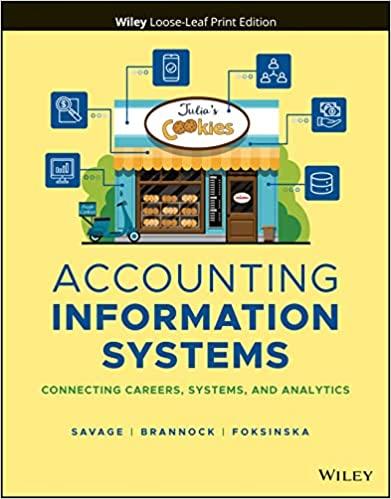





Aztec Company sells its product for $170 per unit. Its actual and budgeted sales follow. April (actual) May (actual) June (budgeted) July (budgeted) August (budgeted) Units 9,500 1,800 6,500 7,000 4,000 Dollars $1,615,000 306,000 1,105,000 1,190,000 680,000 All sales are on credit. Recent experience shows that 24% of credit sales is collected in the month of the sale, 46% in the month after the sale, 27% in the second month after the sale, and 3% proves to be uncollectible. The product's purchase price is $110 per unit. All purchases are payable within 13 days. Thus, 60% of purchases made in a month is paid in that month and the other 40% is paid in the next month. The company has a policy to maintain an ending monthly inventory of 21% of the next month's unit sales plus a safety stock of 110 units. The April 30 and May 31 actual inventory levels are consistent with this policy. Selling and administrative expenses for the year are $1,620,000 and are paid evenly throughout the year in cash. The company's minimum cash balance at month-end is $110,000. This minimum is maintained, if necessary, by borrowing cash from the bank. If the balance exceeds $110,000, the company repays as much of the loan as it can without going below the minimum. This type of loan carries an annual 11% interest rate. On May 31, the loan balance is $43,500, and the company's cash balance is $110,000. Prepare a table that shows the computation of cash collections of its credit sales (accounts receivable) in each of the months of June and July. Percent Collected in June April May July August Credit sales from: April May June July August Amount Collected in June Total April May July August Credit sales from: April May June $ 1,615,000 306,000 1,105,000 1,190,000 680,000 July August Prepare a table that shows the computation of budgeted ending inventories (in units) for April, May, June, and July. AZTEC COMPANY June July Budgeted Ending Inventory For April, May, June and July April May Next month's budgeted sales (units) Ratio of inventory to future sales (percent) Budgeted "base" ending inventory Safety stock Budgeted ending inventory (units) Prepare the merchandise purchases budget for May, June, and July. Report calculations in units and then show the dollar amount of purchases for each month. June July AZTEC COMPANY Merchandise Purchases Budgets For May, June, and July May Budgeted unit sales for month Budgeted ending inventory (units) Required units of available merchandise Budgeted beginning inventory (units) Budgeted purchases (units) Budgeted cost per unit Budgeted cost of merchandise purchases Prepare a table showing the computation of cash payments on product purchases for June and July. Cash payments on product purchases (for June and July) Percent Paid in---...-- May June July From purchases in: May June July - Amount Paid in-------- June July Total May From purchases in: May June July Prepare a cash budget for June and July, including any loan activity and interest expense. Compute the loan balance at the end of each month. (Do not round intermediate calculations. Negative balances and Loan repayment amounts (if any) should be indicated with minus signs.) AZTEC COMPANY Cash Budget June and July June July Beginning cash balance Cash receipts from customers Total cash available Cash disbursements: Interest expense Selling and administrative expenses Payments on purchases 0 0 Total cash disbursements Preliminary cash balance Additional loan (loan repayment) Ending cash balance $ 0 $ 0 Loan balance June July Loan balance - Beginning of month Additional loan (loan repayment) Loan balance - End of month












